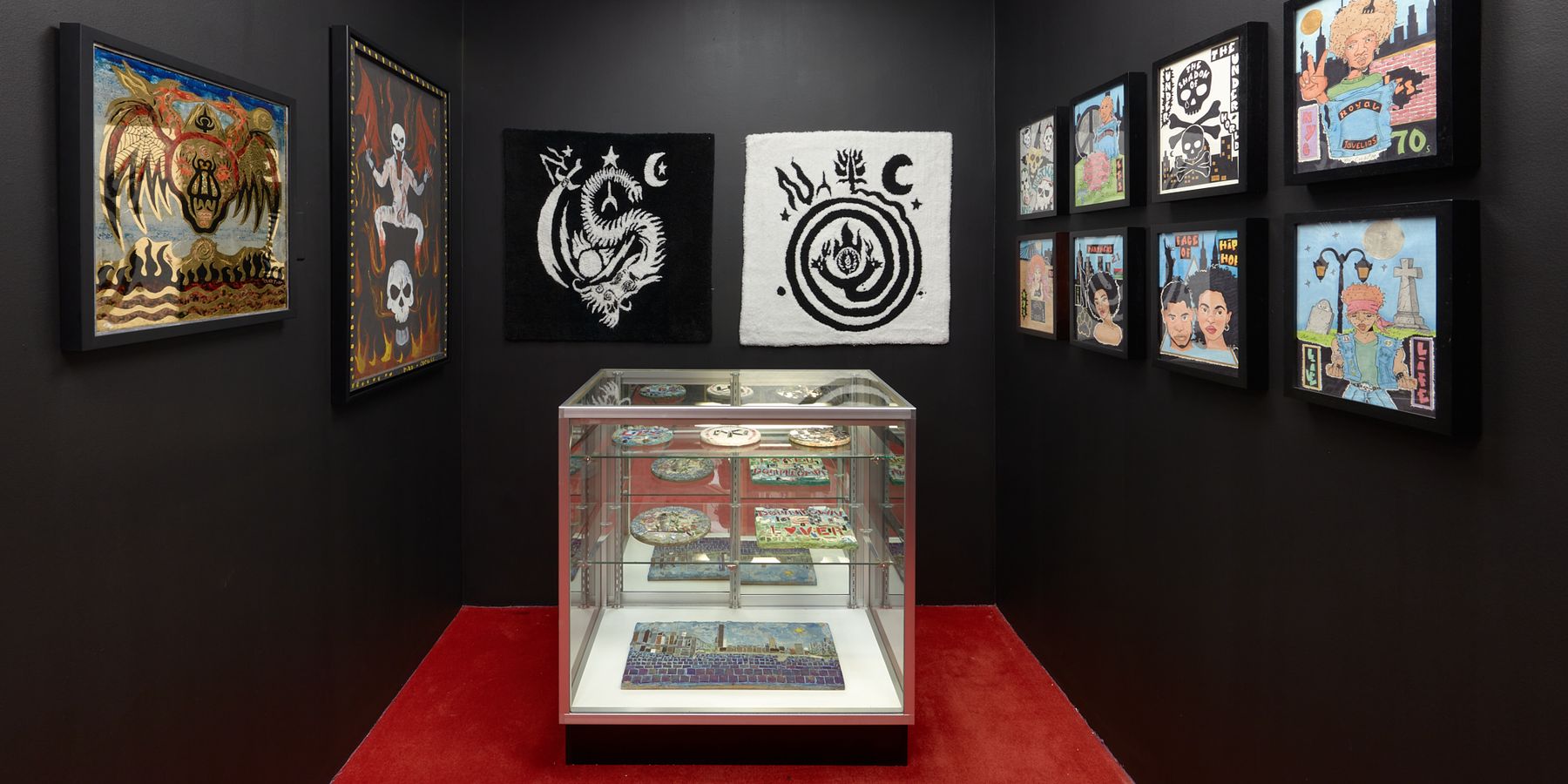
NYC Legends Clayton Patterson and Cochise on Life in the Shadows
BY
Justin Moran | Oct 21, 2024

NYC’s Lower East Side today looks a bit different than it did 40 years ago. But amidst the viral-on-TikTok burger joints, countless cannabis shops and crowds of party girls stumbling out of The Flower Shop remains a constant fixture: Clayton Patterson, the artist famous for documenting downtown’s ever-evolving cast of characters, who still lives in the Outlaw Art Museum at 161 Essex Street.
Back in the ’80s, Clayton secretly filmed — and eventually exposed — police brutality that took place in Tompkins Square Park, which at the time was a high-crime tent city overflowing with homeless New Yorkers. Among its residents was José “Cochise” Quiles, founder of the notorious LES gang “Satan’s Sinners Nomads” and an artist in his own right, who’d go on to develop a close relationship with Clayton and now considers him a mentor.
Cochise served more than 18 years for attempted murder from his time in the street gang, but emerged on the other side with newfound enlightenment and personal purpose: to create art and empower youth. His work from the past and present is currently being shown in a group exhibition at Whaam! Gallery, 15 Elizabeth Street, alongside select pieces from Clayton and mosaics from Jim Powers.
The combination of New York legends in one space is important and its significance is not lost on Cochise, who remembers life-changing advice Clayton gave him decades ago while still in prison: “Whatever you do, don’t forget art.” Years later, that mantra has led to Under the Shadow of the Underworld, featuring embroideries, photographs, illustrations, tapestries and more, now on display at Whaam! through October 27.
There’s a hedonistic quality to Cochise’s older work, reflective of his environment at the time. One painting depicts a nude figure with a skull head, its tongue sticking out amidst flames. Since then, he’s shifted focus to colorful caricatures with a more optimistic bend that feature symbols like peace signs. “The path into the light seems dark,” reads one piece. Clayton’s signature graphics appear throughout his art, like one titled A Lethal Eye, which overlooks the entire room from above.
To Cochise, the show’s name is an homage to gang culture from “back in the ’60s, ’70s and ’80s,” he says. “The whole of New York City, all boroughs were filled with gangs and violence.” This world, as Cochise remembers, had to operate in the shadows. Meanwhile, Clayton wrote an entire book on tattoo history, called In the Shadows, but also relates to the name as an artist who’s dedicated his life to supporting the underground community in a city that historically favors capitalism over culture.
“I started off when I first came to New York in 1979 in Soho’s art scene,” Clayton says. “I didn't like that world at all, it was not for me. So I left that for the Lower East Side and went underground, where I’ve remained.” He continues, “Somehow I’ve always ended up in the shadows,” emphasizing a lifelong mission of staying loyal to the streets despite pressures to go mainstream. “Madonna got her whole act down here, Keith Haring,” he says. “A lot of people come from here, but they grab and they leave.”
Clayton Caps, his contribution to fashion in the form of colorfully embroidered hats, are exhibited in Whaam! (and can also be purchased at Dover Street Market) — one of Clayton’s iconic, more wide-reaching creative pursuits to date. Now at age 76, he says it’s about “stabilizing and preserving” all the work he’s done thus far for future generations to enjoy, rather than his typical approach of “what’s next, what’s next.”
And Under the Shadow of the Underworld is one piece of this larger conservation, celebrating three decades of friendship with Cochise among works that highlight sociopolitical tensions in NYC during that period. “I think I’ve lived the American dream,” Clayton says, when asked if he would change anything from this time. “Even getting beaten up by the cops, it’s all been a great adventure for me. I’m not unhappy with the way it went, now I’ve just got to find a way to save it.”
Cochise relates to Clayton, admitting he “would rather stay in the shadows” but ultimately “wants nothing to do with the past.” He says, “The only thing I want to continue with is using art as a medium to reach young people. I saw the light in a dark place, and that was in Attica, one of the most violent prisons in New York State. This is me, this is my reality and I have changed. When I came home, all I wanted to do was art. So I’m in the shadows, baby, you can have all the light you want.”
Photos courtesy of WHAAM! Gallery